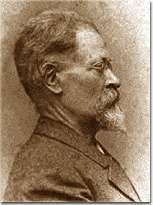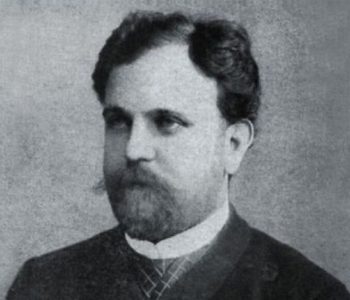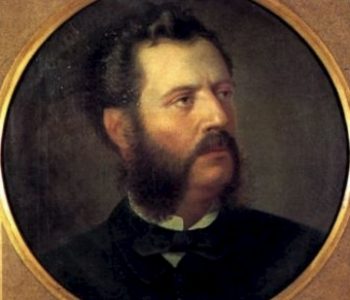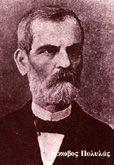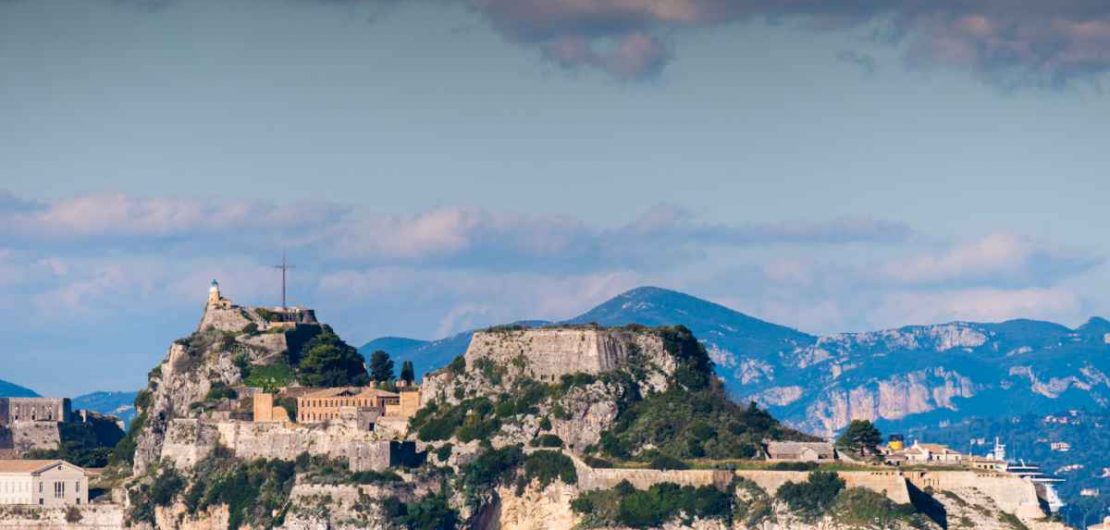
Introduction by R. Nicolì
This digital edition for the POLYSEMI Library reproduces some sections of Francesco Cusani’s text, La Dalmazia Le Isole Jonie e la Grecia (visitate nel 1840), published in two volumes in Milan by Tipografia Pirotta in 1847. The selected parts, copied from the period original text[1], are related to the project area of the Ionian Islands, the subject of the first seven chapters of the second volume.
Cusani points out that this long travel account was published in order to “di offrire […] un quadro delle vicende politiche, degli usi, della letteratura, in breve della condizione odierna dei Dalmati e dei Greci”.[2] Returning from his trip, he decided to gather information on the available bibliography and on the other reports written after passing through those lands. He discovered that the various books were monographs dealing with a single topic of a single discipline, whereas only a few books combined studies on civil and cultural life, history, and nature. The well-structured text by Cusani not only is the outcome of contingent travel impressions, but seems to be a project resulted from specific historical, political, ethno-anthropological, and linguistic research and studies that complete the travel experience. Hence, the text clearly reveals the desire to extend his interests and acquire a comprehensive knowledge of the reality he saw, combining the subjectivity of the experience made and his objectivity as a witness. The text definitely belongs to a genre of travel books connoted by the coalescence of multiple nonspecialized contents that, by virtue of their variety, entail the author’s interdisciplinary competence and an extremely generic reader[3].
The first chapter here proposed contains the description of the journey across the Adriatic Sea and the arrival in Corfu, with fine details concerning life aboard an Austrian Lloyd steam ship. It was equipped with a library that allowed passengers to approach the literature related to their destinations and study classics and people history: “E sono libri di storia, geografia, viaggi relativi alla Grecia ed al Levante nelle lingue italiana, francese, inglese e tedesca”. In the nineteenth century, travelling changed radically in its practical dimension (organization, routes, and methods), but de facto preserved a feature, already well-established in the previous century, that is related to its ideal dimension: travel is a means of acquiring knowledge, socializing, and learning, within an ever more cosmopolitan society. For this reason the Loyd ship offered its travelers the best that was written on Turkey, Egypt, and clearly Greece, by various authors, from Strabo to Pausanias and from Tocqueville to Clot-Bey. Travelling to the east coast of Europe is getting ever more common and is connoted by high expectations: it becomes a key moment in the individual’s experience, prepared by the reading material available onboard, which Cusani dwells on. The traveler’s mind is characterized by a coalescence of escapism and knowledge, or of separation from what is known and contact with otherness, already started during the journey before reaching the destination, by virtue of dynamism that requires prior ‘world knowledge’. The books are essential tools to get ready and deepen the travel experience, and thus the texts available onboard take the role of guides, prompters, and interpreters.
The second chapter, which opens with a description of Corfu – “veramente bella per la sua posizione”, but with inner streets that are “brutte e mal selciate con case anguste e scomode” – proceeds with a digression, through the following three chapters, on the Ionian Islands’ political history, from past events until the sixth Parliament.
The last three chapters reproduced in this digital edition (the fifth, sixth and seventh of the second volume) have a purely travel nature; in fact, contact with ‘otherness’ and the ‘elsewhere’ experience are crucial: Corfu and its towns, but also Santa Maura, Cephalonia, Ithaca, and Zakynthos, and their inhabitants with their customs and activities, dwellings, hotels, and sites are described in an agile style. The narrative plot should be praised for the effort to eliminate spatial and temporal barriers and recognize the identity elements within the age-old Ionian and Adriatic cultural unity. Hence, Cusani has similar interests to those of the previous travelers, belonging to the 18th-century Enlightenment, and is curious about the civil problems society goes through. However, the nineteenth century, as we know, marked a turning point: the new cultural and political vitality at the beginning of the century led the European élite to join the revival of classical antiquity, as for both its aesthetic and ethical values and the history of ancient Greece that was the cradle of those values the native inhabitants seemed ingenuously unaware of. In his account, Cusani summarizes the sharp contradiction between European travelers’ enthusiasm and the Greek people unawareness in a single episode: the author and his travel companion, a Prussian traveler, are disoriented before the Papas of Vriglia convent in Ithaca. They had given their host a text by Homer, as a token of their gratitude, but he proved not to know Homer, generating inevitable concern. For a couple of decades, the two travelers’ European intellectual context has been dominated by the debate over Homeric poems and a new approach to those sites. Greek people did not know Homer, whereas in Europe an ever wider bibliography accumulated and the debate over the islands’ “Homeric identity” was promoted, often with distorted and fanciful analyses. For example, Ithaca, besides being the subject of evocative descriptions, was an essential element in the philological research conducted by those people who wanted to search for and necessarily find Odysseus’ reign in the correspondence between Homer’s descriptions and real sites. In 1900 Dörpfeld conducted his first excavation in search of real Odysseus’ town and palace.
The Prussian young man, who was clearly heading for Greece to go along with the 17th-century Grand Tour imitators, is described in detail by Cusani as “pieno zeppo della filosofia trascendentale, e del misticismo di Schelling, Heghel e Goethe”. He seems to embody the typical 19th-century traveler and scientist, unusual in his behavior and completely absorbed in his studies. Cusani portrays him as he is wandering around the island during the hottest part of the day, collecting plant and insect samples and thus offering “uno spettacolo insolito pei Greci curiosi e beffardi. Ma egli, sempre meditabondo, e a passi gravi, continuava la sua strada, impassibile alle osservazioni, ai sorrisi, agli scherzi”. Yet, he is not a silent person since he expresses his dismay vehemently before the Papas’ ignorance on Homer’s identity. Hence, the narrator Cusani and his travel companion – a scientist – are complementary in the framework of these pages on the Ionian Islands. The former aims to be a representative of those travelers who wanted to convey the whole image of multi-faceted experience; the latter is willing to make a journey basically useful for his scientific knowledge. They form a couple built on a structure that intersects a general view and a specifically focused view.
Cusani’s journey is also an approach to history and landscape. That right combination of archaeological ruins, plants, and modern buildings, as well as the unique symbolic intersection between Nature and History not only is a physical space but also a play of deep contrasts in the eyes of the author. In Corfu there are parallel stretches of olive trees and streets built by the English following the example of the Romans. Sometimes an Eden-like landscape spectacularly opens, as the author writes: “Le Benizze è luogo amenissimo, coltivato a giardini pieni di alberi fruttiferi, in ispecie limoni e aranci, sovente innestati sulla stessa pianta, e che allora in piena fioritura spandevano una soave fragranza, e rallegravano la vista coi frutti loro somiglianti ai pomi d’oro”.
In Santa Maura the only remarkable monument is a man building, an aqueduct, but around the main town, olive groves and luxuriant citrus gardens are in contrast with the sadness and pity the small island arouses in general. We may also find descriptions of mountain landscapes that alternate with the view of coasts and town interior. In Corfu, Mount Pantokrator, which could hardly be accessed due to a steep slope, compensates the travelers’ effort with the fascinating view of Corfu town at a distance, the Vido cliff and the whole winding coast, as well as the wide picturesque view of mountains, hills and valleys in their green shades interrupted by the whiteness of village houses. Finally, the panoramic view is closed by the coastal mountains of Epirus in the north, whose peaks are all visible in the rarefied air. In Cephalonia the geography of places emerges from Monte Nero (Mount Ainos): “Grandioso era il panorama da quest’ultima vetta del Montenero, vedendosi Itaca, Zante, le coste dell’Acarnania e della Morea, ed una parte di Cefalonia; ma come una scena da teatro durò un istante, perché rischiarata appena dall’incerta luce del crepuscolo”.
Cusani, in his search for the survival of antiquity, which drove many contemporary travelers, has an unusual approach and often seems to find streets off-the-beaten track, as when he sees Sami ruins, on the east coast of Cephalonia. The author avoids mentioning the long discussion about the archaeologists’ conflicting views on the place inhabitants, taking it for granted, and he just says on the ruins: “A me basti aver notato queste di Samos, importanti per grandezza e conservazione, e pressoché sconosciute ai viaggiatori”. He often confutes what has been stated on famous archaeological sites, as in Zakynthos, where he becomes aware of the excessive emphasis that connoted Count Paolo Mercati’s essay on the island, which actually does not have ancient monuments, except for some columns or inscriptions of low significance. Hence, he documents that the Ionian Islands, unlike the rest of Greece, are sometimes characterized by a lack of vestiges.
Cusani’s observations on the Ionian Islands’ erudition, schools, literary and scientific works – “qualche lavoro medico o archeologico sono da varj anni le uniche pubblicazioni”, he writes – show the image of an attentive intellectual who is sensitive to the time of great tension and break the Islands were going through, due to the alternation of power forms and social structures that had an inevitable impact on culture. In Zakynthos he records “il torpore in cui giacciono gli studj mancando scuole, biblioteche, stamperie”; an unpleasant observation just on the publishing industry arises from the accidental meeting in the island with Amalia Nizzoli, who shared with him the same love for travel and writing. The writer kept a travel journey on her experience in Egypt, which illuminated the women condition, that Cusani suggested publishing as soon as possible. Since there were no printing works in Zakynthos, the scholar asked him to edit the text in Italy. The author does not mention it in this work, but speaks of the meeting in his Preface to Nizzoli’s book, published in Milan in 1841[4] by the same printing company that published his travel account. The noble and cultured traveler concludes that the Ionian Islands lived off the echo of the fame of some authors, from Foscolo to Solomos (Cusani calls him Salomos), to Mustoxidi, in a general suffocating and demotivating cultural stalemate.
Finally, he also considers the impact of decisive events on common sensibility, examines in depth the often strained relationship between the islanders and the English, and shows it narrating specific episodes that marked the gap between the islanders and the English. In the Epilogue, that closes the section on the Ionian Islands, his last observation just concerns the blend people go through, to the detriment of their specific features: “Gli Joni, sia per carattere, sia per la vita civile e di famiglia, presentano un tipo speciale, perocchè in esse l’elemento originario greco venne modificato da lunga pezza dall’italiano, e da ultimo altresì dall’inglese”
To conclude, Cusani combines the experience of travel that entailed mimesis and the opposite inclination to be an external observer, who participated in the events but cut himself off from them. In the complementarity of these two approaches to places and people, the author documents his journey, between a literary and a critical dimension.
After more than two-hundred years, Cusani’s text is still undoubtedly fascinating since the author portrays the Ionian Islands as a composite world: natural landscapes and urban realities, presence or lack of vestiges and recent buildings, as well as social, political and cultural status are analyzed and have the same importance. No preference for one of these elements emerges from the pages proposed, but the author focuses in turn on a specific aspect that will integrate into the broader framework of the whole work.
-
The work is available in numerous Italian libraries; this text was written down on the basis of the copy kept in the Biblioteca provinciale Nicola Bernardini in Lecce. ↑
-
F. Cusani, La Dalmazia Le Isole Jonie e la Grecia (visitate nel 1840), volume I, chapter 8. ↑
-
See on this topic: L. Clerici, Per un atlante dei resoconti dei viaggiatori in Italia: L’ottocento in Il viaggio in Italia. Modelli, stili, lingue, a cura di I. Crotti, Atti del Convegno, Venezia 3-4 dicembre 1997, Edizioni Scientifiche Italiane, Napoli, 1999. ↑
-
A. Nizzoli, Memorie sull’Egitto e specialmente sui costumi delle donne orientali e degli harem scritte durante il suo soggiorno in quel paese (1819-1828), Tipografia e Libreria Pirotta, Milano, 1841. A new edition of the travel journal was later edited by Sergio Pernigotti, Amalia Nizzoli, Memorie sull’Egitto, Le edizioni dell’Elleboro, Napoli, 1996. ↑


